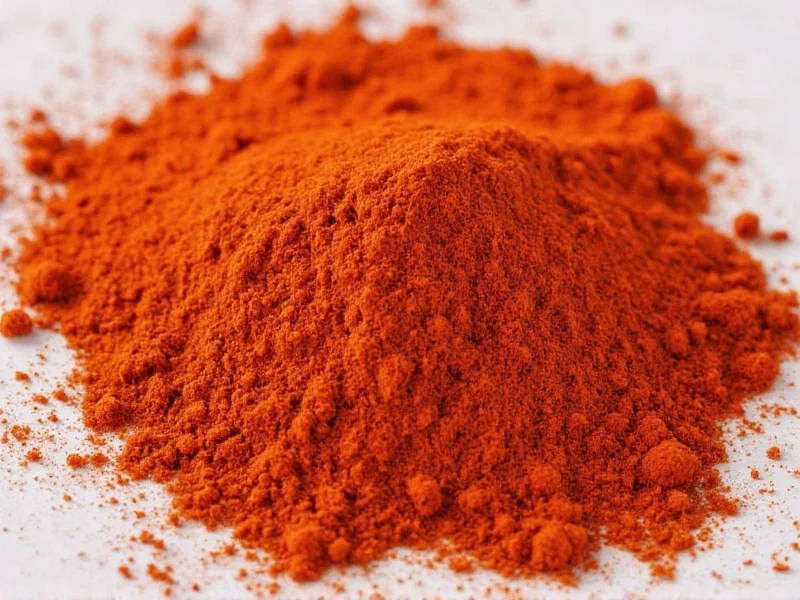When you need a non spicy substitute for paprika in your cooking, understanding the different options available can make or break your dish. Paprika comes in various forms—sweet, smoked, and hot—with the hot varieties containing capsaicin that creates heat. For those seeking mild paprika alternatives for sensitive palates, the key is finding substitutes that maintain the characteristic red color and earthy flavor profile without adding unwanted spiciness.
Understanding Paprika Varieties
Paprika is made from ground peppers, primarily from Capsicum annuum varieties. The heat level depends on the specific peppers used:
- Sweet paprika: Made from mild peppers, contains no heat
- Smoked paprika: Can be sweet or hot, depending on the base peppers
- Hot paprika: Contains spicier pepper varieties with noticeable heat
Many people mistakenly believe all paprika is spicy, but authentic Hungarian sweet paprika contains zero heat while delivering rich color and flavor. If you're specifically looking for non spicy paprika substitute for Hungarian dishes, sweet paprika itself is actually the ideal choice.
Top Non-Spicy Paprika Substitutes
1. Sweet Paprika (The Obvious Choice)
Before reaching for alternatives, check if you actually have hot paprika. Authentic sweet paprika is completely non-spicy. This is the best non-spicy paprika substitute when you need to maintain authentic flavor in dishes like goulash or chicken paprikash. Use a 1:1 ratio when substituting.
2. Roasted Red Bell Peppers
Finely diced or pureed roasted red bell peppers provide similar color and a sweet, earthy flavor without any heat. This substitute works particularly well in sauces, stews, and marinades. For every teaspoon of paprika, use 1-2 tablespoons of roasted red peppers, adjusting liquid content as needed.
3. Tomato Powder
Tomato powder offers a deep red color and umami richness that mimics paprika's earthiness. It's an excellent choice when you need paprika replacement that doesn't add heat to tomato-based dishes. Use ½ teaspoon of tomato powder for every 1 teaspoon of paprika.
4. Annatto (Achiote)
Annatto seeds or powder provide vibrant color with a mild, slightly peppery flavor that lacks significant heat. Common in Latin American cuisine, it's perfect as a non spicy alternative to smoked paprika when color is the primary concern. Use ¼ teaspoon annatto powder per 1 teaspoon paprika.
5. Turmeric (With Caution)
Turmeric offers similar vibrant color but has a distinct flavor profile. Use sparingly (⅛ teaspoon per 1 teaspoon paprika) in dishes where its earthy notes complement other ingredients. Best for when you need a paprika substitute for color without spice in rice dishes or mild curries.
| Substitute | Color Match | Flavor Profile | Best For | Substitution Ratio |
|---|---|---|---|---|
| Sweet Paprika | ★★★★★ | Earthy, sweet, authentic | All paprika applications | 1:1 |
| Roasted Red Bell Pepper | ★★★★☆ | Sweet, roasted, mild | Sauces, stews, marinades | 1-2 Tbsp per tsp |
| Tomato Powder | ★★★☆☆ | Umami, tangy, rich | Tomato-based dishes | ½ tsp per tsp |
| Annatto | ★★★★☆ | Mildly peppery, earthy | Color-focused applications | ¼ tsp per tsp |
| Turmeric | ★★★★☆ | Earthy, slightly bitter | Rice dishes, mild curries | ⅛ tsp per tsp |
Recipe-Specific Recommendations
Choosing the right substitute depends on your specific dish:
For Hungarian Goulash
Use authentic sweet Hungarian paprika if possible. If unavailable, a combination of tomato powder (for depth) and a pinch of annatto (for color) creates the closest approximation of non spicy paprika substitute for Hungarian dishes.
For Deviled Eggs
Roasted red bell pepper puree works perfectly as a non spicy alternative to smoked paprika, providing similar color without overwhelming the delicate egg flavor.
For Paella
When you need a paprika replacement that doesn't add heat to traditional Spanish paella, use a small amount of saffron combined with tomato powder for color and depth.
Common Substitution Mistakes
Avoid these pitfalls when seeking non-spicy paprika alternatives:
- Mistaking all paprika for hot varieties - Check your paprika label; sweet paprika contains no heat
- Using cayenne as a substitute - This will add significant heat, defeating the purpose
- Overusing turmeric - Its strong flavor can dominate dishes if used in paprika-equivalent amounts
- Ignoring recipe context - The best substitute varies based on whether you need color, flavor, or both
Creating Your Own Mild Paprika Blend
For those who regularly need mild paprika alternatives for sensitive palates, consider making your own blend:
- 2 parts sweet bell pepper powder
- 1 part tomato powder
- ½ part garlic powder
- ¼ part onion powder
- Pinch of annatto for color
This homemade mixture provides the color and depth of paprika without any heat, making it an excellent non spicy paprika substitute for everyday cooking.











 浙公网安备
33010002000092号
浙公网安备
33010002000092号 浙B2-20120091-4
浙B2-20120091-4